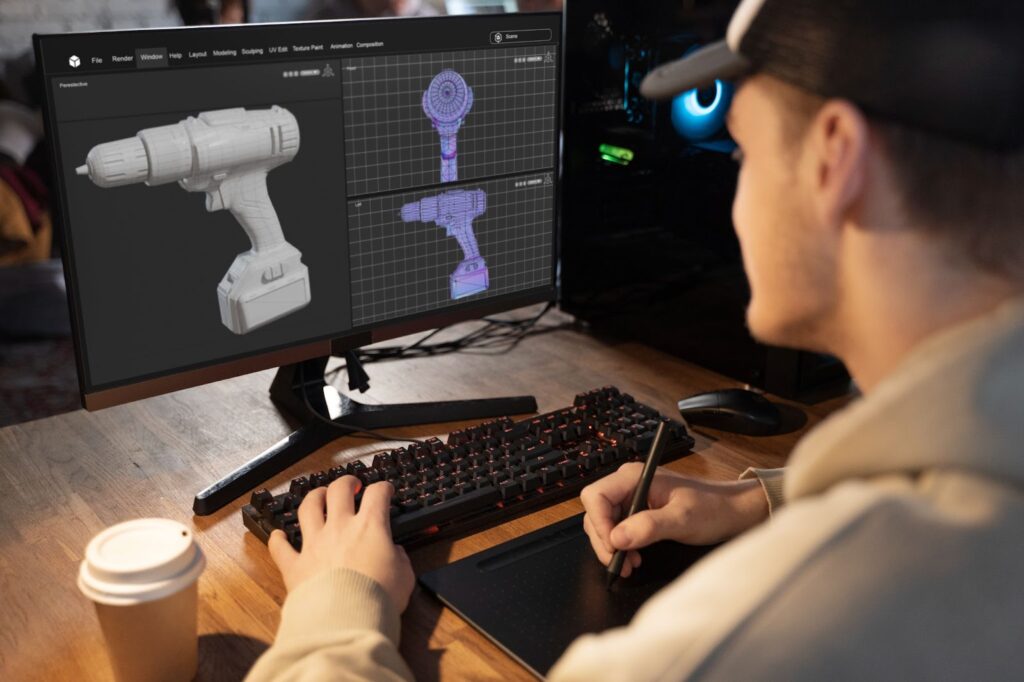The realm of animation is an enthralling domain, possessing the remarkable ability to whisk spectators away to realms of fantasy, stir profound sentiments within them, and weave narratives that grip their souls. Embedded within every triumphant animated production, be it a film or a series, lies an intricate attention to detail and a profound grasp of the principles governing animation. Among these foundational principles, staging emerges as a pivotal component in animating scenes with vitality and depth. Staging, within the realm of animation, denotes the art of presenting concepts in a manner that leaves no room for ambiguity, ensuring absolute clarity for the audience. In the following discourse, we shall explore how premier animation studios harness the power of staging to enrich storytelling and ensnare the imaginations of their audience.
Crafting Coherent Composition in Animation:
In the intricate world of animation, one of the pivotal elements that breathe life into a scene is the art of creating coherent composition. It’s not merely about placing characters, props, and backgrounds on screen but rather orchestrating them in a harmonious arrangement that captivates the audience’s gaze and seamlessly guides them through the narrative journey.
Essential Elements of Lucid Visual Storytelling
- Strategic Character Placement: Mastering the art of arranging characters within a scene is pivotal for underscoring their importance and their function in the unfolding narrative. It involves a deliberate positioning that not only captures the viewer’s attention but also reveals the dynamics between the characters. Key strategies include:
- Utilizing the foreground for protagonists to amplify their prominence;
- Placing antagonists or secondary characters in the mid or background to establish hierarchy;
- Aligning characters with environmental elements that reflect their personality or mood.
- Ingenious Prop Arrangement: Thoughtful placement of objects within a scene significantly contributes to the storytelling, adding layers to the narrative without the need for words. It involves selecting and positioning items in a way that they not only enrich the visual aesthetics but also symbolize key aspects of the story. Recommendations include:
- Choosing props that resonate with the theme or epoch of the story;
- Arranging objects to form visual patterns or lead the eye towards central narrative elements;
- Incorporating props that reveal character traits or plot developments subtly.
- Imaginative Background Design: The backdrop of a scene serves as more than just a setting; it is a canvas that provides context, mood, and depth. Crafting a background that complements the foreground while contributing to the story’s ambiance is crucial. It should:
- Offer a glimpse into the world the characters inhabit, enhancing the realism or fantasy of the narrative;
- Utilize textures, colors, and lighting to evoke emotions or underscore themes;
- Be designed to avoid clutter, ensuring the main subjects stand out.
- Effective Use of Space: The distribution of elements within a scene, including the empty spaces, is instrumental in achieving a balanced and focused composition. Effective use of space involves:
- Embracing negative space to prevent overcrowding and draw attention to the primary subjects;
- Creating a sense of movement or stillness through the spatial arrangement;
- Balancing visual elements to achieve harmony and guide the viewer’s gaze through the scene.
Case Study: Pixar Animation Studios:
A prime exemplar of mastering composition in animation lies within the illustrious works of Pixar Animation Studios. Take, for instance, the iconic films “Toy Story” and “Finding Nemo.” Each frame within these cinematic marvels is meticulously curated to ensure that every visual element serves a purpose in advancing the storyline and engaging the audience.
- Insights from Pixar’s Approach:
- Storyboarding Excellence: Pixar invests considerable effort in storyboarding to plan and refine composition before the actual animation process begins;
- Attention to Detail: From character placement to background intricacies, every detail is thoughtfully considered to maintain narrative clarity and visual appeal;
- Iterative Process: Pixar’s iterative approach allows for continuous refinement of composition, ensuring that each frame contributes meaningfully to the overall storytelling experience;
- Audience Engagement: By prioritizing clear composition, Pixar creates an immersive viewing experience where audiences can effortlessly follow the narrative while being visually enthralled.
Highlighting Character Performance
In the intricate world of animation, one of the paramount elements is the portrayal of character performance. This goes beyond mere movement; it’s about breathing life into characters, making their emotions palpable, their motivations evident, and their intentions crystal clear. By employing a variety of staging techniques, animators bring characters to life, ensuring that their innermost thoughts and feelings are effectively communicated to the audience.
Key Techniques for Emphasizing Character Acting:
- Exaggerated Poses: Animators often utilize exaggerated poses to convey the essence of a character’s emotions and intentions. These larger-than-life gestures help to amplify the impact of the performance, making it more visually striking and engaging;
- Expressive Facial Expressions: The face is a canvas for emotions, and animators leverage this by crafting expressive facial expressions that reflect the nuances of the character’s inner state. From subtle twitches to dramatic shifts, every movement of the eyebrows, eyes, and mouth is carefully choreographed to convey a rich tapestry of feelings;
- Dynamic Movement: Movement is a powerful tool for character expression. Animators employ dynamic movement to convey energy, personality, and mood. Whether it’s a confident stride, a hesitant shuffle, or a playful skip, each movement serves to deepen the audience’s understanding of the character and their story.
Disney’s Mastery of Staging for Emotional Connection:
Disney Animation Studios stands as a beacon of excellence in the realm of character animation, with a storied history of iconic characters that have captured the hearts of audiences worldwide. From the mischievous antics of Mickey Mouse to the majestic roar of Simba in “The Lion King,” Disney’s characters are imbued with a depth of emotion that transcends the screen.
At the heart of Disney’s success lies their mastery of staging techniques to evoke genuine emotion and forge a deep connection with viewers. Through meticulous attention to detail and a profound understanding of character psychology, Disney animators breathe life into their creations, allowing them to resonate with audiences on a deeply emotional level.
Mastering Visual Hierarchy:
In the realm of animation, mastering the art of visual hierarchy is akin to wielding a magic wand to guide the viewer’s gaze across the screen. It involves a delicate dance of elements like scale, contrast, and color to orchestrate a symphony of visual delight. Here’s how you can harness the power of visual hierarchy to elevate your animated scenes:

- Scale Manipulation: Experiment with the proportions of elements within your scene to create focal points and add depth. Enlarging important objects or characters can draw attention to them, while shrinking less significant elements can push them into the background;
- Contrast Control: Play with the contrast between foreground and background elements to make key aspects of your scene pop. Darkening the background or adding highlights to foreground objects can create visual drama and enhance the overall impact;
- Color Coordination: Utilize color strategically to direct the viewer’s gaze and evoke specific emotions. Vibrant hues can command attention, while subtle color harmonies can create a sense of cohesion and atmosphere;
- Take a page from the playbook of DreamWorks Animation, the powerhouse behind beloved films like “Shrek” and “How to Train Your Dragon.” Their mastery of visual hierarchy is evident in every frame, where contrasting colors and clever scaling techniques breathe life into their fantastical worlds, captivating audiences of all ages.
Crafting Narrative Pacing:
Animation is not merely about moving images; it’s about crafting compelling narratives that unfold seamlessly before our eyes. Central to this art form is the skillful manipulation of staging to control the ebb and flow of the story’s rhythm. Here’s how you can wield staging to enhance the pacing of your animation:
- Character Placement: Experiment with the placement of characters within the frame to dictate the pace of interaction and dialogue. Bringing characters closer together can intensify emotional moments, while placing them further apart can create a sense of distance or tension;
- Object Movement: Use the movement of objects within your scene to punctuate key moments and transitions. Swift movements can inject energy and excitement into action sequences, while slower, deliberate motions can build anticipation and suspense;
- Atmospheric Details: Pay attention to subtle atmospheric details, such as lighting changes and background animations, to enrich the mood and tone of your narrative. A flickering candle or a gust of wind can add layers of depth to your storytelling;
- Look no further than Studio Ghibli, the revered studio behind timeless classics like “Spirited Away” and “My Neighbor Totoro,” for inspiration in narrative pacing. Their meticulous attention to detail and masterful use of staging create immersive worlds where every frame is imbued with emotion and nuance, taking viewers on unforgettable journeys through the power of storytelling.
Conclusion
At the heart of animation lies the cornerstone of staging, a pivotal principle that intricately molds the narrative journey. Premier animation studios grasp the profound significance of lucid composition, dynamic character portrayal, strategic visual arrangement, and the artful pacing of storytelling, all contributing to the creation of enchanting and immersive animated realms. Through the meticulous application of these staging methodologies, these studios masterfully breathe vitality into their narratives, ensnaring the imagination and stirring inspiration among global audiences.



